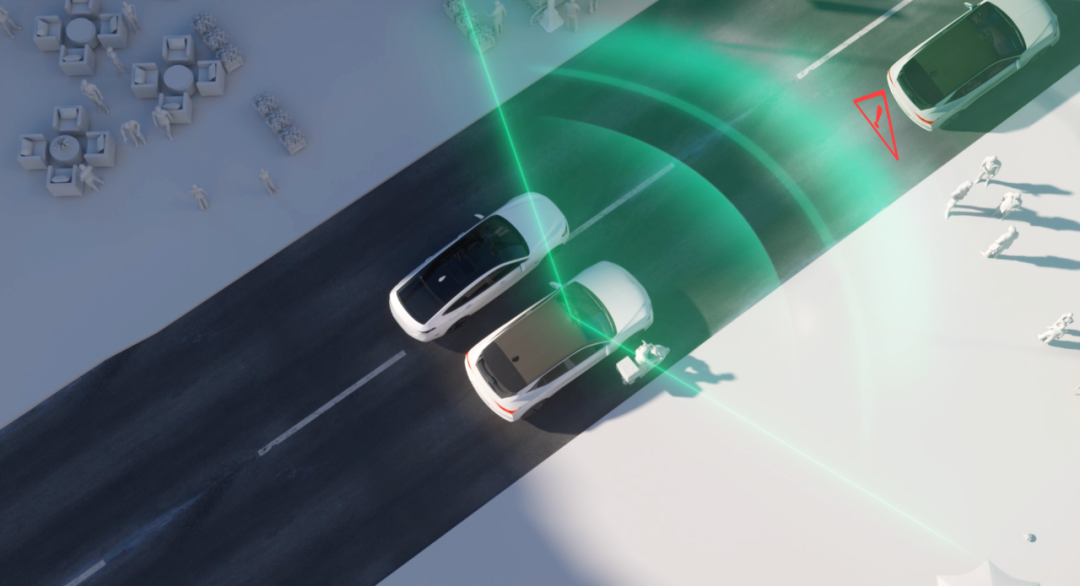
As the saying goes, "there are thousands of roads, but safety comes first." Car safety has always been one of the key considerations for consumers when choosing a car. In order to meet users' demand for safety, the active safety functions of cars are also constantly evolving. AEB (Autonomous Emergency Braking) has received widespread attention in the industry in the past year. It can sense road risks in real time and enable the vehicle to "actively brake/slow down", thereby avoiding or mitigating accidents. Compared with passive safety, active safety can more effectively reduce the occurrence of traffic accidents. According to the European Commission's estimate, AEB can save more than 1,000 lives in the EU every year 1. Another media survey showed that 92% of consumers would give priority to vehicles with AEB function when purchasing a car 2. Nevertheless, the current AEB function is not perfect and there is still much room for improvement.
First, the current AEB effect at night is far worse than during the day.
A survey by the U.S. Department of Transportation found that 77% of pedestrian deaths and about half of pedestrian injuries occurred under dark lighting conditions, and statistics from the American Insurance Association found that AEB for cars can reduce the risk of pedestrians by 32%-33% during the day, but at night, the current AEB function cannot reduce the risk. 3。
Pure vision-based AEB performs poorly in the dark 4
On April 29 this year, the U.S. Department of Transportation issued a new regulation, FMVSS No. 127, which emphasizes the expansion of the scope of application of AEB to nighttime, especially for pedestrians, requiring that the AEB working speed can reach 72 km/h regardless of day or night. 5。 LiDAR can detect directly by actively emitting lasers and does not rely on ambient light. Using LiDAR data for AEB function development can greatly enhance AEB safety at night. An international paper pointed out that at night, the average perception accuracy of LiDAR data is three times that of pure vision. 6。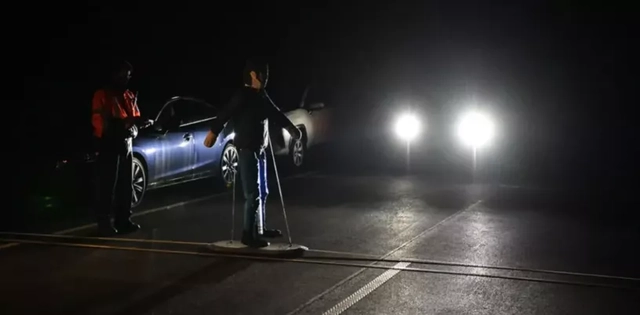
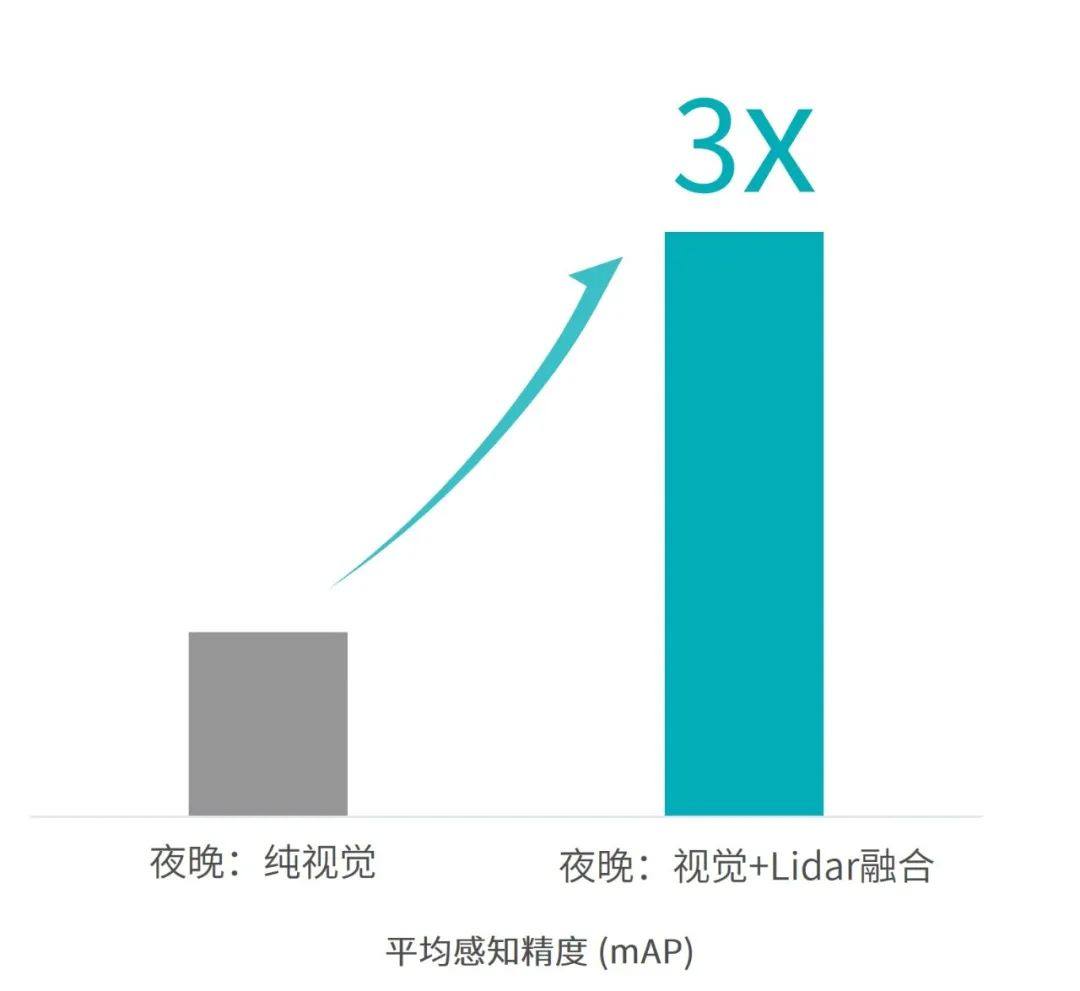
Second, the camera’s ability to recognize irregular obstacles is limited.
Pure visual algorithms need to classify the target objects in advance and cannot effectively identify atypical objects outside the whitelist, such as a car carrying a large tree or a two-wheeled electric vehicle carrying a pile of goods. The typical features of these vehicles are blocked, making it difficult for visual algorithms to classify and identify them.
Pure vision-based AEB has difficulty identifying foreign objects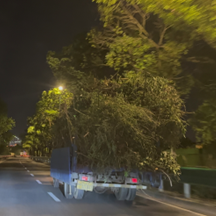

Similarly, LiDAR has the characteristic of direct measurement. No matter what kind of target object it is, as long as it can sense the data, it can determine the location of the obstacle. AEB integrated with LiDAR will make it easier to identify special-shaped obstacles and achieve safe braking. Among the active safety features of many domestic smart car brands, only models equipped with lidar have the AEB function for special-shaped obstacles.
Third, the current upper limit of AEB working speed needs to be further improved.
For example, the new regulations of the US Department of Transportation also put forward higher requirements for the speed of AEB. Compared with the previous regulations, the upper limit of the working speed of vehicle AEB has been nearly doubled, reaching 145 km/h for the scene of the vehicle in front. This undoubtedly requires the car to have a higher perception distance and confidence. 5。 A survey of leading domestic smart car brands found that compared with models without lidar, the AEB speed limit of models equipped with lidar has been significantly improved by about 50%.

Fourth, the current AEB false trigger rate is high, affecting the riding experience。
Insufficient ranging accuracy or complex light and shadow can lead to pure visual misrecognition of objects, which in turn can cause dangerous AEB mis-triggering. At present, there are many cases of mis-triggering complained by consumers, including mis-triggering on steep slopes, mis-triggering by car exhaust, mis-triggering on metal plates on the ground, etc. China's 2024 version of C-NCAP also keeps up with market demand and adds tests for AEB mis-action scenarios.
Vision-based AEB can be easily triggered by mistake in tunnels, complex lighting and other scenarios. 7
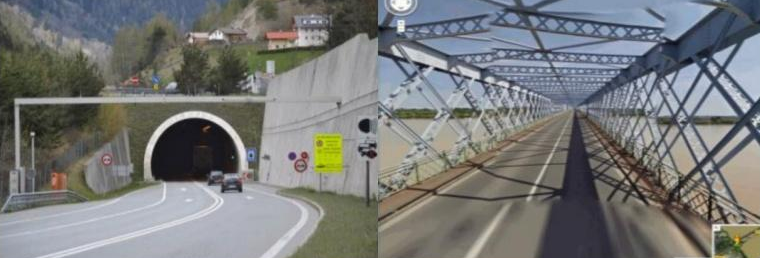
What kind of lidar To make AEB safer?
The farther the LiDAR can see, the higher the AEB safety speed limit
The working speed of AEB depends greatly on the sensing distance. Let’s take two similar LiDARs released at similar times as examples for analysis: *两者角分辨率接近

As can be seen from the above figure, when other parameters are equal, the LiDAR with a longer range can support a higher AEB safety speed limit. The AEB safety braking speeds supported by the LiDAR with a standard range of 200 meters and 150 meters are 148 km/h and 135 km/h respectively, which is a very obvious difference. The earlier the car sees the road conditions ahead, the safer braking can be guaranteed at a higher speed, thus ensuring life safety in the event of an emergency.
The clearer the lidar sees, the higher the AEB safety speed limit
Some people may ask, as long as the lidar keeps "rolling" the detection distance, can AEB respond more promptly and safely? Of course not, because the light beams emitted by the laser radar have a certain angle, and the distance between the light beams gradually increases as the distance increases. It can be understood that the smaller the angular resolution number, the denser the lines and the better the clarity.
For small targets, the smaller the angular resolution of the LiDAR, the longer the effective detection distance.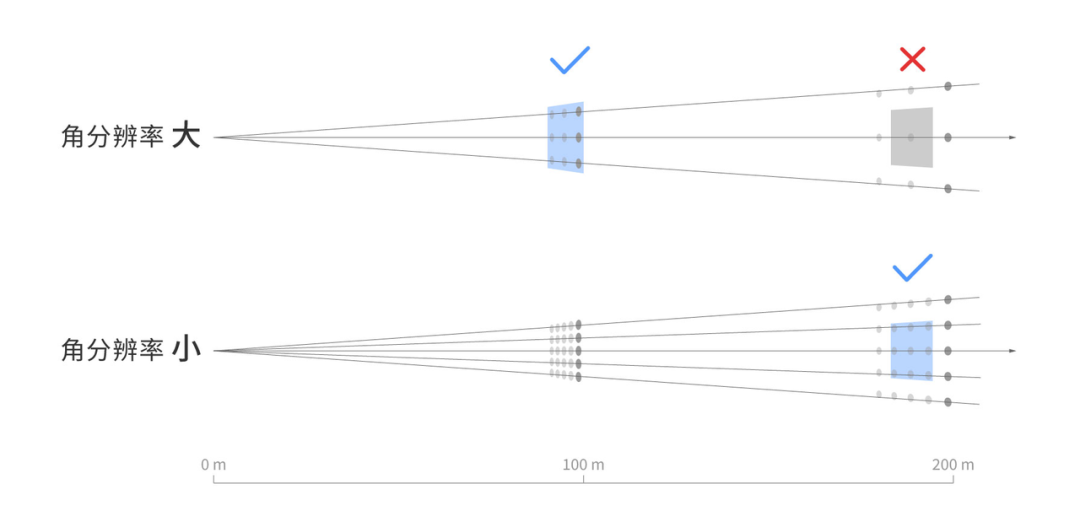
If you encounter small obstacles, such as pedestrians, tires, cones, triangles, small animals, etc., only lidar with higher resolution and clearer vision can detect them at a long distance. In the previous issue, we mentioned that one of the important parameters representing resolution is "angular resolution" (article review). Taking the two LiDARs as an example, their ranging capabilities are comparable, with only the angular resolution being different:
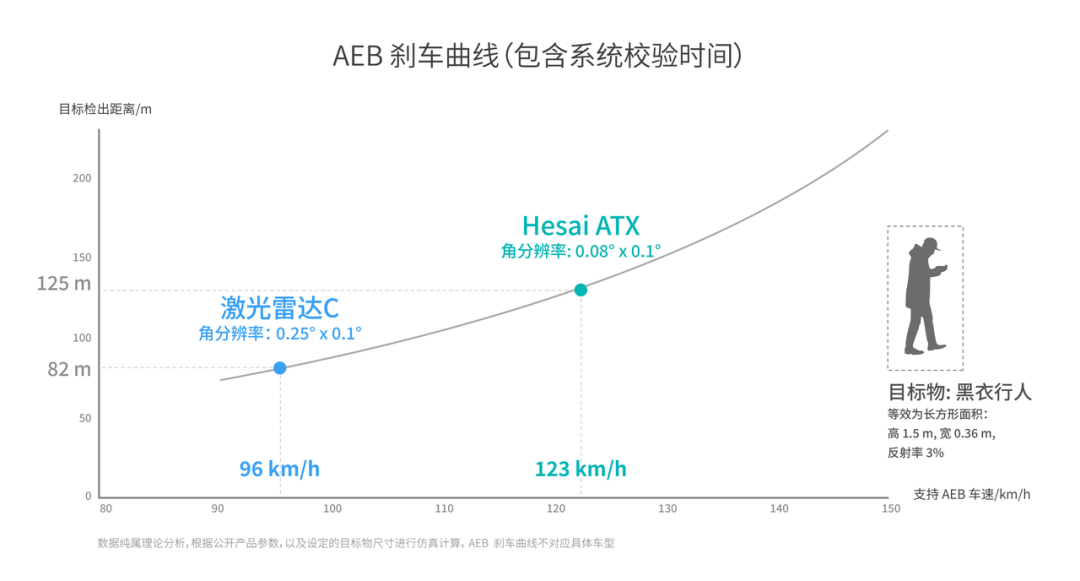
Compared with the other lidar, ATX has a smaller optimal angular resolution and is 3 times higher definition than the other one. When facing a pedestrian in black, ATX's target detection distance is more than 50% farther, and the upper speed limit of AEB for pedestrians it supports has also been increased from 96 km/h to 123 km/h. Therefore, to achieve higher AEB speeds, both lidar detection range and resolution are important.
Laser radar with optical zoom can see far and see clearly at the same time
In order to meet the needs of different scenarios of smart cars, Hesai has developed a 7x optical zoom function on ATX, which can switch between multiple modes in real time, while satisfying the requirements of "seeing far" and "seeing clearly". When driving in urban areas, ATX can achieve an ultra-wide field of view of 140°. Compared with the 120° horizontal field of view of similar products on the market, it refreshes the upper limit of the horizontal field of view of high-performance long-range lidar. It can detect the road conditions on both sides of the vehicle body in time and avoid danger at any time. When driving at high speeds, turning on the 7x optical zoom can achieve a super long-range measurement capability of 500 meters and 7x high-definition resolution, thereby accurately sensing road conditions in the distance and ensuring the safety of the vehicle at ultra-high speeds.
Noise-reducing LiDAR further reduces AEB false triggering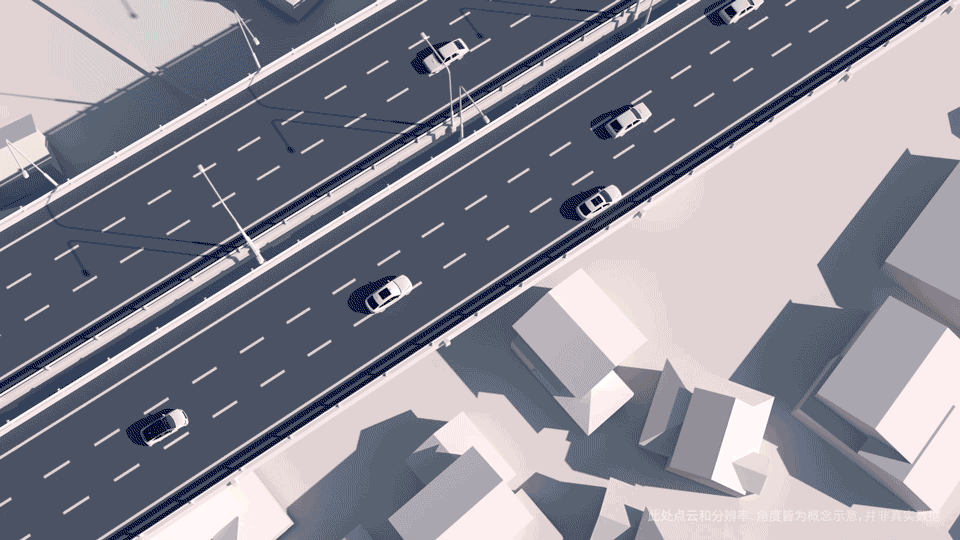
LiDAR can greatly reduce false triggering caused by visual misidentification in some scenarios with its high precision, but bad weather such as rain, fog, and flying dust still poses great challenges to car perception. If LiDAR can filter out these noise points in the air from the data level, it can further reduce false triggering of the system while achieving safe driving. Therefore, Hesai embedded an intelligent point cloud parsing engine in ATX and its self-developed full-waveform intelligent recognition technology, which can intelligently identify rain, fog, exhaust gas from the vehicle in front, dust, etc., and mark them in real time, filtering out more than 99.9% of environmental noise. ATX's intelligent noise filtering function can significantly reduce interference from rainy and foggy weather, provide smart cars with all-weather safety perception, and effectively reduce system misidentification and false triggering.
ATX real point cloud (blue: normal point cloud data; red: noise data)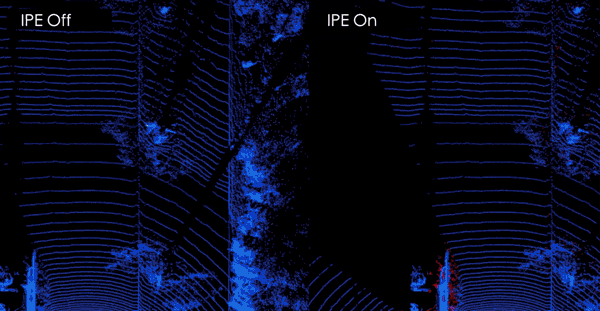
LiDAR continues to grow Just for safer AEB
As a world-leading LiDAR company, Hesai has been committed to providing automobiles with higher performance, higher quality and higher reliability LiDAR products. At the same time, Hesai is also paying close attention to the terminal use scenarios of LiDAR, especially AEB, a key "safety component" that can avoid accidents and save lives, and continuously iterates product functions with the goal of automobile safety. The ATX, which was launched this year, has been fully upgraded to the fourth-generation self-developed chip platform. It has not only greatly improved indicators such as distance measurement and resolution, but also added multiple functions such as optical zoom and noise reduction. ATX will be mass-produced in Q1 2025, and will be available in models to meet consumers one after another, protecting every passenger with full [safety].
Source: 1 https://www.secrss.com/articles/60411 2 https://www.sohu.com/a/359745686_560056 3 https://www.repairerdrivennews.com/2022/03/30/iihs-regulators-should-require-pedestrian-aeb-that-works-in-the-dark/ 4 https://baijiahao.baidu.com/s?id=1724479145610494424&wfr=spider&for=pc 5 https://www.nhtsa.gov/press-releases/nhtsa-fmvss-127-automatic-emergency-braking-reduce-crashe 6 BEV Fusion: Multi-Task Multi-Sensor Fusion with Unified Bird‘s-Eye View Representation, https://hanlab.mit.edu/projects/bevfusion 7 https://zhuanlan.zhihu.com/p/163057084
The original article was originally published on the WeChat public account (Hesai Technology):To make car AEB safer, what key role can LiDAR play?
Welcome to join us.Aibang lidar industry communicationThere are currently 2,700 people, including relevant persons in charge from major lidar manufacturers and OEMs. Click on the tags below to filter
Lidar OEM Autonomous Driving application terminal laser VCSEL light detector sensor Optical element Optical module filter Galvanometer Optical components radome cover adhesive Electronic component semiconductor chip tier1 Parts Non-standard automation Hardware circuit board motor Coating Coating equipment Plastic Products vehicle electronics Surface treatment auto parts equipment Testing Equipment Connector plastic Material software trading acting College graduate School other
Download:
